
The use of premium IOLs is becoming more common, and previous predictions about their performance are being confirmed by both scientific and clinical evidence. In tandem, patients seem to be requesting these lens technologies with increasing frequency—a frequency that will likely continue to increase in the future as more lens designs appear in this space.
But what is a premium IOL? A premium is something different from and better than the standard. In ophthalmology, the standard of care for IOL implantation today is most likely a monofocal aspheric IOL with neutral asphericity. However, the value of aspheric IOLs may be debatable in elderly patients, as many do not have sufficient pupil size to obtain the benefits of asphericity. Additionally, the degree of corneal asphericity is not the same for everyone, so the optimal value for IOL asphericity is also debatable. For these reasons, spherical IOLs in routine surgery for age-related cataract should still also be considered an adequate standard of care.
From the perspective of what is considered the standard of care in IOL technology, today we may consider two types of commercially available IOLs as premium: multifocal and toric. Moreover, several groups of IOLs may become premium lenses in the immediate future, including those that can be customized for a given corneal asphericity, accommodating IOLs, and low-vision IOLs for patients with age-related macular degeneration (AMD).
This article highlights some of the premium IOL technologies that are on the top of my list, either as good choices for my patients currently or those that could be in the near future (see Ones to Watch).
MULTIFOCAL IOLs
Multifocal IOLs are a most important topic, one that Joseph Pikkel, MD, and I have explored in depth in a recently published book.1 Several trends of development in multifocal IOL optics are outlined here.
Refractive optics. Multifocal IOLs can use refractive or diffractive optical systems. In refractive technologies, the optics of the lens create multiple foci along the visual axis. These lenses can be rotationally symmetric, as for example the M-flex (Rayner Intraocular Lenses; Figure 1). A symmetric multifocal IOL design that is based on a progressive increase of the index of refraction toward the center of the lens is seen in the Acriva Reviol line of lenses (VSY Biotechnology; Figure 2).
At a Glance
• The improvements that have been made to date in toric and multifocal IOLs, while impressive, do not mean the process is finalized. Developments will continue, and three areas of potential progress are clear: custom asphericity IOLs, accommodating IOLs, and low-vision IOLs.
• Multifocal IOLs with a diffractive design have experienced major evolution in the past few years as they have expanded from bifocal to trifocal and, most recently, extended range of vision based on chromatic aberration correction and control of asphericity.
• The use of MICS and IOL models capable of being implanted through incisions of less than 1.8 mm can help surgeons better appreciate toric lenses as refractive tools.
Refractive multifocal IOLs may also be rotationally asymmetric, based on the concept of varifocality. This innovative concept depends on constant variation of the power in a given meridian of the lens, a change that is provided by a segment in which the power is progressively altered, similar to the design of varifocal spectacle lenses for presbyopia. The main representatives of these types of lenses are the Lentis line of IOLs, which include the Comfort, MPlus 3, and Mplus X (all by Oculentis; Figures 3 through 5).
Diffractive optics. Diffractive multifocal IOL technology is perhaps the most commonly used approach to multifocality in the current IOL market. IOLs with this design have experienced major evolution in the past few years as they have expanded from bifocal to trifocal and, most recently, extended range of vision based on chromatic aberration correction and control of asphericity.
All of these lens designs are based on the principle of diffraction, by which light is directed toward multiple foci. One of the most representative examples of this approach, with sharp foci at distance and near, is the apodized diffractive AcrySof IQ Restor IOL (Alcon; Figure 6). Recently, a new generation of diffractive multifocal IOLs has appeared, the diffractive trifocal, represented by lenses such as the AT LISA tri (Carl Zeiss Meditec; Figure 7) and the FineVision (PhysIOL; Figure 8). Just recently, Alcon introduced a third trifocal IOL to the European market: the PanOptix trifocal (Figure 9). In these designs, the diffractive pattern manipulates the light so that a portion of the light energy (18%–20%) is not lost—as with conventional diffractive designs—but instead taken to a different focus or to one of the principal foci.
Ones To Watch
Refractive Multifocal
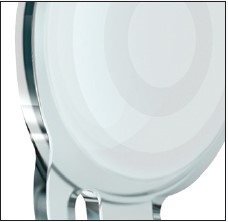
Figure 1. M-flex (Rayner Intraocular Lenses)
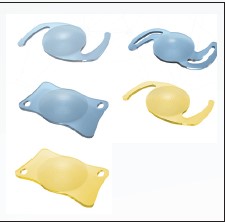
Figure 2. Acriva Reviol (VSY)

Figure 3. Lentis Comfort (Oculentis)
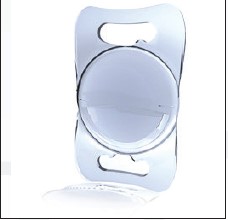
Figure 4. Lentis Mplus 3 (Oculentis)
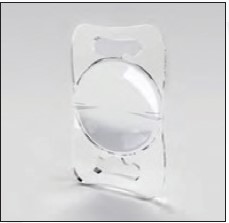
Figure 5. Lentis Mplus X (Oculentis)
Diffractive Multifocal

Figure 6. AcrySof IQ Restor (Alcon)
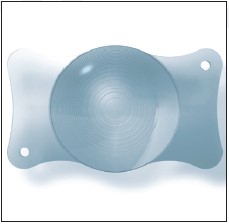
Figure 7. AT LISA tri (Carl Zeiss Meditec)
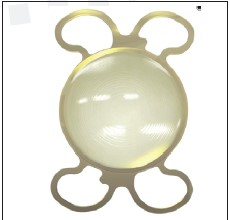
Figure 8. FineVision (PhysIOL)
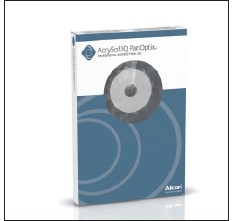
Figure 9. PanOptix (Alcon)
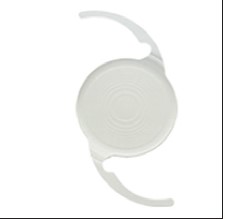
Figure 10. Tecnis Symfony (Abbott Medical Optics)
TORIC
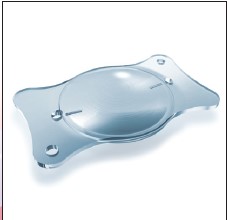
Figure 11. AT LISA tri toric (Carl Zeiss Meditec)
FUTURE PREMIUM TECHNOLOGIES
MyLentis (Oculentis)
Sapphire (Elenza)
FluidVision (PowerVision)
Lumina (Akkolens)
Lentis Mplus High Add (Oculentis)
In some lenses, the diffractive pattern is further modified to control the refraction of different wavelengths of the light, a process that is called chromatic aberration correction. An example of this is the Tecnis Symfony (Abbott Medical Optics; Figure 10). An extended range of vision is achieved in the Symfony by further optical manipulation of diffractive pattern targets. Extended range of vision creates minimal blur in a segment of the length of the visual axis in which tolerance to blur exists without significantly degrading the quality of the retinal image.
The combination of diffractive multifocality, extended range of vision obtained by chromatic aberration control and asphericity changes, and optical performance of the lens depending on pupil control makes modern multifocal lenses much more flexible in terms of near and, particularly, intermediate vision performance. These lenses also produce a significant increase in contrast sensitivity, which was lost in earlier lens designs in part due to the dispersion of light that was created by the diffractive pattern. These changes all lead to better visual outcomes with modern multifocals.
Add options. Multifocal lenses are also becoming flexible in terms of the power that can be added for near vision, from low (1.50 D, as in the Lentis Comfort), to intermediate (2.50 D, as in the Acrysof IQ Restor +2.5 D), to higher (3.00 D, as in the Acrysof IQ Restor +3.0 D; Tecnis Symphony; and Lentis MPlus X with 3.0 Addition) adds. The appropriate add power can be chosen according to the patient’s lifestyle and preferred activities (far, intermediate, or near dominant).
This flexibility has made the outcomes of multifocal lenses today much more satisfactory and precise. Even so, patients must be educated that neural adaptation is always necessary due to the superimposition of foci and multiple retinal images that must be differentiated by the brain and to the unavoidable loss of light in the dispersion to the different foci, leading to a reduction in contrast sensitivity function. Having said that, the most advanced multifocal IOLs offer contrast sensitivity functions similar to those of monofocal IOLs, reflecting the major improvements that have been made in this technology.
TORIC IOLs
A toric IOL is indicated in eyes with more than 1.00 D of astigmatism—or as many as 30% of patients entering one’s clinic. Corneal incisions for astigmatism correction, whether created manually or with a femtosecond laser, are relatively unpredictable; their effect depends on many factors, including corneal topography, location on the cornea, distance from the limbus, and age of the patient. Despite recent claims of improvement with the use of femtosecond lasers, corneal incisions are still far from ideal for the correction of corneal astigmatism.
Toric IOLs are more predictable if their implantation does not induce astigmatism. This is why the use of microinicision cataract surgery (MICS) and IOL models capable of being implanted through incisions of less than 1.8 mm are invaluable, making these lenses more appreciated as refractive tools.
At least in Western Europe, toric lenses can be ordered in an unlimited range, as they can be made in standard and nonstandard powers of up to 10.00 D or more on demand. An example of this is the AT LISA tri toric IOL (Carl Zeiss Meditec; Figure 11).
The precision of toric IOLs for astigmatism correction depends on several factors: (1) the surgeon’s accuracy in implanting on the right axis, (2) the surgically induced astigmatism, (3) the postoperative evolution of the lens position, and (4) accurate IOL power calculation. The influence of the posterior surface of the cornea on toric IOL calculation, which is particularly important when implanting toric lenses of less than 2.00 D of cylinder, has recently been recognized. Modifications of the toricity calculation using tools such as the Barrett Toric IOL Calculator, the Baylor nomogram, and the Alpins method will make toric IOL outcomes even more precise and reliable in the future.
FUTURE PREMIUM IOLs
The third group mentioned at the beginning of this article includes IOLs that have the promise of becoming premium IOLs in the immediate future. The improvements that have been made to date in toric and multifocal IOLs, while impressive, do not mean the process is finalized. Developments will continue, and three areas of potential progress are clear.
Custom asphericity. The customization of IOLs by aspericity will be of utmost importance for cataract patients who have previously undergone corneal refractive surgery. These eyes always have induced corneal aberrations that must be corrected. The asphericity is especially important, as customization of the lens depending on IOL asphericity is a way to improve the patient’s visual outcome, increasing the possibilities of extending the range of vision. Ocuentis is currently engaged in the study of a customized lens (the MyLentis project). It is hoped that these lenses will become available in the coming years.
Accommodating IOLs. Despite initial positive reports, all accommodating IOL designs proposed to date have failed to meet expectations. However, interest in the potential for a truly accommodating IOL persists. The human brain is not multifocal but monofocal, and neural adaptation will not be needed once a working accommodating IOL is available. The capsular bag is probably not the best place to locate an IOL of this type, based on recent evidence; however, the capsular bag can still harbor a electroactivated lens such as the Sapphire (Elenza) or a lens that undergoes changes in fluidics in response to the elasticity of the capsule such as the FluidVision (PowerVision).
Neither of these lenses is yet available. The electroactivated process is complex; it depends on pupil size, which is highly variable and changes with age. Also, the elasticity of the capsule is far from being demonstrated; rather, the contrary is the case, which makes the future performance of the FluidVision model debatable.
Sulcus-based accommodating IOLs have a potential advantage based on evidence that forces in the sulcus dependent on the ciliary body persist over time.2 Lenses based on this approach have been implanted successfully in initial clinical trials. Recently the Lumina IOL (Akkolens) has demonstrated accommodative capability in more than 50 eyes with 1 year of follow-up. This lens holds major promise, and future experience will confirm the performance and safety of this device.
Low-vision IOLs. The aging population is making a major impact on the demography of AMD, with a consequent increase in the number of patients with low vision. IOLs with a high near-vision add may be of major value in these patients.
Oculentis is currently undertaking a clinical study of the Lentis Mplus High Add IOL with a 8.00 D add in patients with moderate visual acuity losses (BCVA of Snellen decimal 0.2 or 0.3). This degree of add gives patients extra capability for near vision magnification and improvement in quality of life.
Other models for patients with AMD are being developed. Previous designs for patients with AMD, based on telescopic magnification or prismatic deviation of light toward the paracentral macula, have had disappointing results. Telescopic IOLs cause major loss of peripheral visual field, and visual improvement with any IOL is short-lived due to the progressive extension of the macular degeneration process in the dry form of AMD.
SUMMARY
Premium IOLs are an exciting area of interest to surgeons, our patients, and the ophthalmic industry. Patients can benefit greatly from them if the IOLs are properly selected. Surgeons are becoming better at selecting these lenses properly based on patient characteristics and also in making these lenses more profitable for their practices. The industry has found in them ways to create new incomes and invest in further developments for ophthalmology. n
1. Alio JL, Pikkel J, eds. Multifocal Intraocular Lenses: The Art and the Practice. Cham, Switzerland: Springer; 2014.
2. Alió JL, Ben-Nun J. Study of the force dynamics at the capsular interface related to ciliary body stimulation in a primate model. J Refract Surg. 2015;31(2):124-128.
Jorge L. Alió, MD, PhD, FEBO
• Professor and Chairman, Division of Ophthalmology, Miguel Hernandez University, Alicante, Spain
• Vissum Instituto Oftalmologico de Alicante, Spain
• jlalio@vissum.com, jl.alio@umh.es
• Financial disclosure: Paid consultant or investigator (Oculentis, Carl Zeiss Meditec, Akkolens, Elenza, Hanita)
